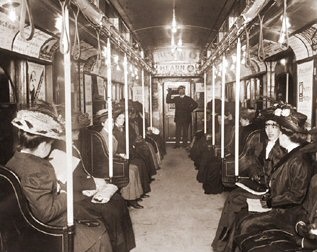Over the years, the various Madison Square Gardens built in New York have hosted just about every sport: football, boxing, track, hockey, basketball, even swimming.
But who knew the Garden has once been converted into an enormous floor-spanning bowling alley—with pin boys perched at the end of each lane and wooden desks set up where judges sat and did the scoring?
 It happened in 1909, when the Stanford White–designed arena was located on Madison Avenue and 26th Street.
It happened in 1909, when the Stanford White–designed arena was located on Madison Avenue and 26th Street.
The National Bowling Association came to town to hold its championship, transforming the place into a “bowlers’ paradise” with 24 lanes spanning the entire amphitheater—and $50,000 in prize money.
[Photo: Madison Square Garden 1900, MCNY]







